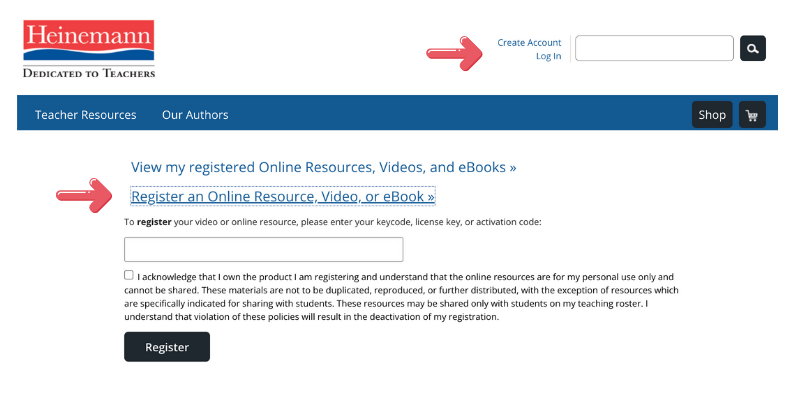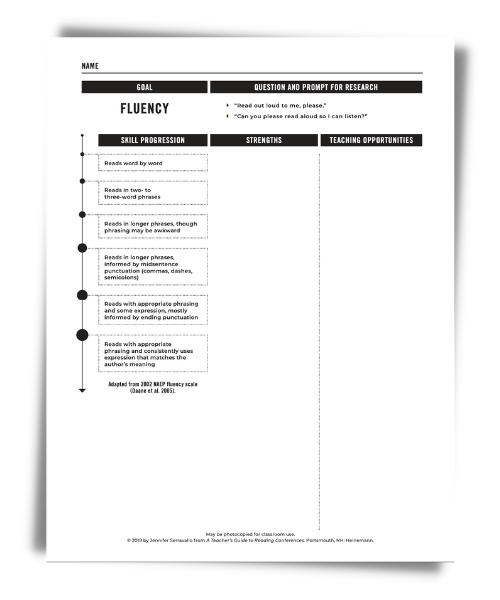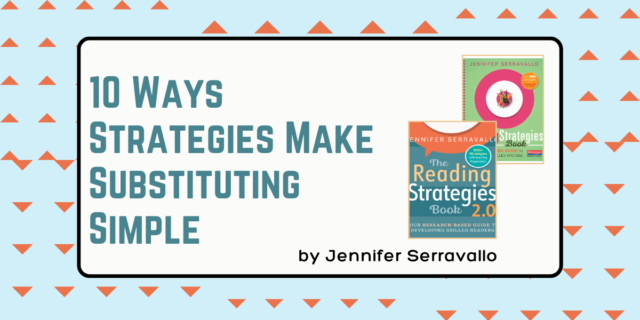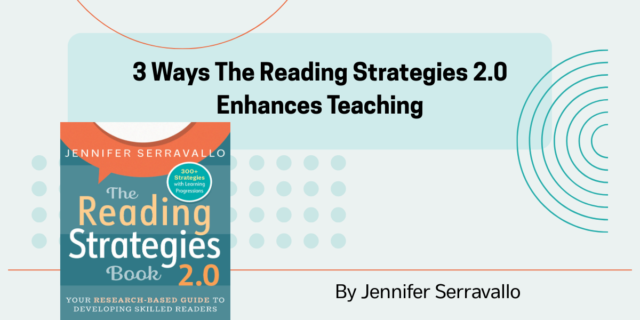
If you’re using strategies strategically, conferring to point kids toward progress, and boosting progress with small groups, you’re likely witnessing dramatic growth from your students. Jen Serravallo has an important message for you: it’s time to take stock of progress and plan for next steps. In a time when we want to ensure rapid and thorough progress, progress monitoring provides the crucial link between your initial assessments and adapting future instruction.
Jen recommends using progressions as just-right tools to help. You can find her reading and writing progressions in the respective online resources for A Teacher’s Guide to Reading Conferences and Teaching Writing in Small Groups. Go to Heinemann.com and click Log in in the top right to either view or register online resources. You'll need the key code from the copy of your book. This blog post has step-by-step instructions.
Go to Heinemann.com and click Log in in the top right to either view or register online resources. You'll need the key code from the copy of your book. This blog post has step-by-step instructions.
Below is the Fluency resource for A Teacher's Guide to Reading Conferences. Progressions simplify ongoing assessment and progress monitoring. If a student’s skills don’t yet match the place on the progression where you want them to be, it’s probably time to share additional strategies or give them guided practice with the ones they are working on. If a child has reached the level of skill you’re teaching toward, it’s time for a new goal!
Progressions simplify ongoing assessment and progress monitoring. If a student’s skills don’t yet match the place on the progression where you want them to be, it’s probably time to share additional strategies or give them guided practice with the ones they are working on. If a child has reached the level of skill you’re teaching toward, it’s time for a new goal!
Here are some tips to figure out what a next goal might be:
If you’re using strategies strategically, conferring to point kids toward progress, and boosting progress with small groups, you’re likely witnessing dramatic growth from your students. Jen Serravallo has an important message for you: it’s time to take stock of progress and plan for next steps. In a time when we want to ensure rapid and thorough progress, progress monitoring provides the crucial link between your initial assessments and adapting future instruction.
Jen recommends using progressions as just-right tools to help. You can find her reading and writing progressions in the respective online resources for A Teacher’s Guide to Reading Conferences and Teaching Writing in Small Groups. Go to Heinemann.com and click Log in in the top right to either view or register online resources. You'll need the key code from the copy of your book. This blog post has step-by-step instructions.
Go to Heinemann.com and click Log in in the top right to either view or register online resources. You'll need the key code from the copy of your book. This blog post has step-by-step instructions.
Below is the Fluency resource for A Teacher's Guide to Reading Conferences. Progressions simplify ongoing assessment and progress monitoring. If a student’s skills don’t yet match the place on the progression where you want them to be, it’s probably time to share additional strategies or give them guided practice with the ones they are working on. If a child has reached the level of skill you’re teaching toward, it’s time for a new goal!
Progressions simplify ongoing assessment and progress monitoring. If a student’s skills don’t yet match the place on the progression where you want them to be, it’s probably time to share additional strategies or give them guided practice with the ones they are working on. If a child has reached the level of skill you’re teaching toward, it’s time for a new goal!
Here are some tips to figure out what a next goal might be:
- Look back at your notes to see what possible goals you observed or considered from past assessments.
- Talk with the student and/or check out their work to see whether your previous observations remain the most likely areas for growth.
Once you’ve decided on a goal, progressions help you set realistic milestones for marking a student’s growth.
Once ongoing assessment points to a new goal, the whole teaching cycle resets. You’ll select strategies to address the skills where growth can happen, set the goal with the student one-on-one and share strategies with them, use small groups to lock in their learning, and reassess to keep the virtuous cycle going.
In this challenging year, children need you like never before. Your expertise will make all the difference, and Jennifer Serravallo’s books and resources can help smooth the path forward so that you can spend more of your time meeting the needs of your learners.
For more on assessment and reading progressions to support it, try Jennifer Serravallo’s Understanding Texts & Readers and A Teachers’ Guide to Reading Conferences. For writing progressions, Teaching Writing in Small Groups.




